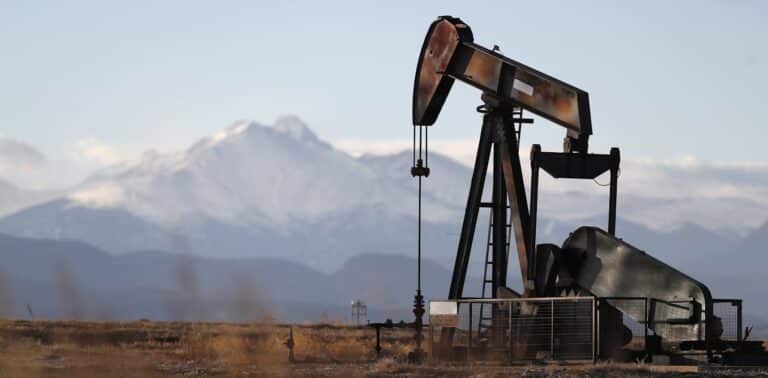This website uses cookies as well as similar tools and technologies to understand visitors’ experiences. By continuing to use this website, you consent to Columbia University’s usage of cookies and similar technologies, in accordance with the Columbia University Website Cookie Notice.
Energy Explained
Insights from the Center on Global Energy Policy
This Energy Explained post represents the research and views of the author. It does not necessarily represent the views of the Center on Global Energy Policy. The piece may be subject to further revision. Contributions to SIPA for the benefit of CGEP are general use gifts, which gives the Center discretion in how it allocates these funds. Rare cases of sponsored projects are clearly indicated.
For a full list of financial supporters of the Center on Global Energy Policy at Columbia University SIPA, please visit our website at Our Partners. See below a list of members that are currently in CGEP’s Visionary Circle. This list is updated periodically.
While Iran’s first direct attack using missiles and drones against Israel on April 13 did not incur significant damage to military sites or, more importantly, civilian casualties, it has changed the dynamic between the two states and increased the chance of a regional if not wider war. Israel is very likely to respond, and that retaliation, even if sent with warning and calibration, could spur a new escalation, one prone to miscalculation and disproportionate response from both sides. Whether an Iranian front detracts Israel from its war in Gaza and pressures Israel to a ceasefire or accelerates Israel’s plans to invade Rafah, and simultaneously engage more directly with Hezbollah in southern Lebanon, remains unclear. Israel may choose to exit one war to fight a potentially more existential threat, or it may consider fighting three at once.
What is clear is that the Israeli government is unlikely to accept the status quo, with Iran too acknowledging that the “equation has changed.”[1] Israel may seek to establish deterrence, but there is no way to do so without expecting a wave of subsequent retaliations. If somewhat of an aberration, the April 13 attack by Iran was no surprise, with Gulf states acting as communication channels. Iran used its diplomats to justify the attack under UN Charter Article 51 as self-defense after Israel’s attack on a consular building in Damascus on April 1.[2] In the subsequent cycle of engagements, Iran is likely to change these new diplomatic tactics to those it is more familiar with: using proxies, targeting Israeli and its partners’ infrastructure and military sites in third-party countries, and using terror against civilians in ways that allow some deniability, reserving the option of attacks on Israel directly.
Energy markets remained somewhat sanguine on Monday, April 15, as supply and transit were largely unthreatened, reserves plentiful, and spare capacity in OPEC-plus (led by Saudi Arabia) accessible. That said, over the weekend, Iran’s Revolutionary Guards did board and seize an Israeli-owned (Portuguese-flagged) tanker as it passed through the Strait of Hormuz.[3] Iran now plans to send its navy to escort Iranian commercial vessels in the Red Sea.[4] The calm in markets belies a definite disquiet in politics, raising questions of what the attack means, both in terms of escalation and for oil markets.
What Has Changed?
Iran and Israel are now officially out of the shadow war, which was becoming more and more open, especially as the Houthis increased their ability to target Israeli territory with drones and missiles since February.[5] The long-standing threat of Hezbollah on the northern Israeli border has been somewhat contained in a pattern of retaliatory rocket strikes, but may be expanding.[6] Hezbollah leadership and the US government are communicating indirectly and more frequently, such that the White House was successful in discouraging Israel to directly attack Hezbollah forces in Lebanon shortly after October 7.[7] The daylight between US and Israeli policy toward Lebanon is increasing. The Biden administration does not want to see an Israeli war in Lebanon, but Israel may calculate that now is the best time to both attack Iranian interests and settle its threat on the northern border.
Iran can also change the way it directs and foments discontent among some—not all—Arab populations, as widespread anger continues over Israel’s war in Gaza, amid accusations of targeting children, aid workers, and civilians and the purposeful disruption of food aid. In Gulf states, there are open lines of communication with both Iran and Hezbollah to try to shield their domestic populations from any retaliation Iran might threaten for their support of Israel in the use of their American bases for air strikes or for their diplomatic ties with Israel. No GCC state has denounced the Iranian attack of April 13. But this may be unsustainable. How Iran directs its proxies and leans on Arab states to publicly disavow Israel could prove another source of regional instability, with early signs in Jordan.[8]
Iran’s finances have changed. Iran has benefitted from oil revenue over the past year, exporting roughly $43 billion worth of crude oil (pre-discount), up 46% from the previous year.[9] Iranian oil output hit a five-year high of 3.25 million barrels a day in March, up from 2.1 million in January 2021.[10] Enforcing sanctions could be a game changer for Iran and for oil markets, but there is little interest at the current moment from the Biden administration to do so. A G7 communique one day after the April 13 attack made no mention of oil sanctions on Iran,[11] though the White House has announced new sanctions to come on Iranian drone and missile capability.[12]
Oil Market Concerns
Oil markets will now likely focus on the level of escalation/de-escalation between Israel and Iran (and more broadly in the region) and whether supply is ultimately impacted. Thus far, markets have seen no disruption, even going back to the attacks on October 7. Likely embedded in the ~$90 per barrel (bbl) current oil price is a geopolitical risk premium of at least $3–$5/bbl. Fundamentals have tightened as demand exceeded supply for the first few months of the year, helping support prices around $85/bbl, even without the geopolitical tensions.
The key focus area is any potential blockage to the Strait of Hormuz, where, as mentioned, Iran seized an Israel-linked vessel prior to the weekend attacks. Roughly 13 million barrels per day (b/d) of oil supplies (and additional refined products) flow through this waterway, including nearly 1.5 million b/d of Iran’s own exports.[13] Any material impact to these supplies certainly could send oil prices to $100/bbl or higher, with the upside and duration dependent on the severity of the disruption. While a few million b/d of supply from Saudi Arabia and the UAE could be rerouted, half or more of those barrels could be cut off from global markets without access to the Strait.
These geopolitical concerns come as seasonal factors are expected to lift demand by at least 1 million b/d over the coming months[14] and OPEC-plus is expected to keep supply cuts in place at least through the end of June. The OPEC-plus group holds spare capacity of at least 5 million b/d and by some estimates as high as 6 million b/d.[15] But should flows through the Strait of Hormuz be disrupted, much of this spare capacity may not be able to make it to market or enough to offset supply losses, creating even more upside risk for oil prices. In addition, some group members may need time to ramp up and unlock their capacity. All these factors have the potential to push prices well over $100/bbl for some period.
Officials in Washington will likely look at all supply risk scenarios. Options for mitigating those risks could include managing calls for tightening sanctions on Iranian oil exports that could tighten the market even without any of the previously discussed potential supply disruptions. Washington could also try to leverage providing regional security for the easing of supply cuts from OPEC-plus, if not within the second quarter then possibly into July as the US driving season kicks into full swing and global demand peaks for the year. In addition, the US government may look to draw further from the US Strategic Petroleum Reserve (SPR) in case of significant supply disruptions. However, recent limitations of the SPR and the restricted scope for releases (in our view, potentially up to 50 million barrels spread out over a few months later in the year, which would also curtail further future releases), it is not clear how much relief this option could bring. Indeed, should these geopolitical risks linger for an extended period, the only likely factors that could bring prices back down into the $70/bbl range would be economic or macro shocks.
CGEP’s Visionary Circle
Corporate Partnerships
Occidental Petroleum Corporation
Tellurian Inc
Foundations and Individual Donors
Anonymous
Anonymous
the bedari collective
Jay Bernstein
Breakthrough Energy LLC
Children’s Investment Fund Foundation (CIFF)
Arjun Murti
Ray Rothrock
Kimberly and Scott Sheffield
Notes
[1] https://www.washingtonpost.com/world/2024/04/14/iran-israel-attack-missiles-drones/
[2] https://twitter.com/Iran_UN/status/1779269993043022053
[3] https://www.bbc.com/news/world-middle-east-68806508
[4] https://www.yahoo.com/news/iran-navy-escorting-iranian-commercial-075943891.html
[5] https://www.reuters.com/world/middle-east/houthis-say-they-fired-ballistic-missiles-israels-eilat-2024-02-02/
[6] https://www.nytimes.com/2024/04/17/world/middleeast/hezbollah-drone-attack-israel.html
[7] https://www.nytimes.com/2023/10/15/us/politics/us-israel.html
[8] https://www.ft.com/content/882ad9d8-3a77-4279-a006-d8767a600b00
[9] https://twitter.com/TankerTrackers/status/1779578700477960396
[10] https://www.bloomberg.com/opinion/articles/2024-04-14/iran-s-attack-on-israel-upsets-opec-seach-for-goldilocks-price
[11] https://www.reuters.com/world/middle-east/g7-leaders-discuss-iranian-attack-sunday-video-call-2024-04-14/
[12] https://www.whitehouse.gov/briefing-room/statements-releases/2024/04/16/statement-by-national-security-advisor-jake-sullivan-on-holding-iran-accountable-for-unprecedented-attack-on-israel/
[13] https://www.eia.gov/todayinenergy/detail.php?id=61002
[14] https://www.iea.org/reports/oil-market-report-april-2024; https://www.opec.org/opec_web/en/publications/338.htm
[15] https://www.energyintel.com/0000018e-a994-d183-abef-afd75ebb0000
More on Energy Explained Energy Explained
Proposed EC Regulation Sets Course for Exit from Russian Gas
The European Commission published a proposed regulation on June 17 to end Russian gas imports by the end of 2027.

What the Conflict in the Middle East Means for China’s Natural Gas Supply Security
China’s dependence on the energy supplies that move through the Strait of Hormuz makes it especially vulnerable to any possible closure of the waterway by Iran in retaliation for attacks by Israel and the United States.

Q&A: An Energy Take on the Current State of the Iran-Israel-US Conflict
The conflict between Iran, Israel, and now the United States has yet to disrupt energy supplies to global markets.

Trump’s Seismic, Irrevocable Middle East AI Shift
The commercial deals Trump struck on artificial intelligence cooperation will likely shift the global balance of power for one of this century's most critical technologies.

Relevant
Publications

Oil and gas communities are a blind spot in America’s climate and economic policies
Slowing climate change means cutting fossil fuel use. Many oil- and gas-producing communities aren’t prepared for that future, as a former White House economic and climate adviser explains.




